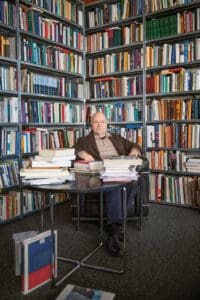by Nic Ulmi
Although everything seems to place science and belief in opposition, in reality, the barrier between them is far from watertight. The science historian Michael Hagner, whose background is in medicine and philosophy, sees not only a problem but also an opportunity.

Do beliefs play a role in the history of science?
I would distinguish between two types of belief. The first is commonplace: the trust that each scientist places in the results of others. Since we cannot reproduce all the experiments we read about, we rely on the belief that the methodology and data of our colleagues are correct. This trust, without which science could not function, must be distinguished from religious, cultural, political and social beliefs. This second category has also played a role in the history of science, with both positive and negative effects.
For the history of neuroscience, a particularly harmful belief has led to the attempt to locate categories such as gender and race in the brain. This used the authority of neurologists to justify the assertion that women are inferior to men and non-Europeans to Europeans. These ideas are no mere accident in the history of neuroscience, but have guided research since the late 18th century. The measurement – or mismeasurement, to use Stephen Jay Gould’s term – of skulls, brains, cortical convolutions, and the cytoarchitecture of the cortex was intended in part to measure supposed intellectual and moral differences between the sexes and among races. The traumatic experience of the Holocaust has led neuroscientists to reflect further on their own beliefs. But scientists of each new generation must undertake this thought process. Today’s neuroscientists should be aware of the pitfalls of the past and be cautious in their assertions.
Continue reading this Horizons article



